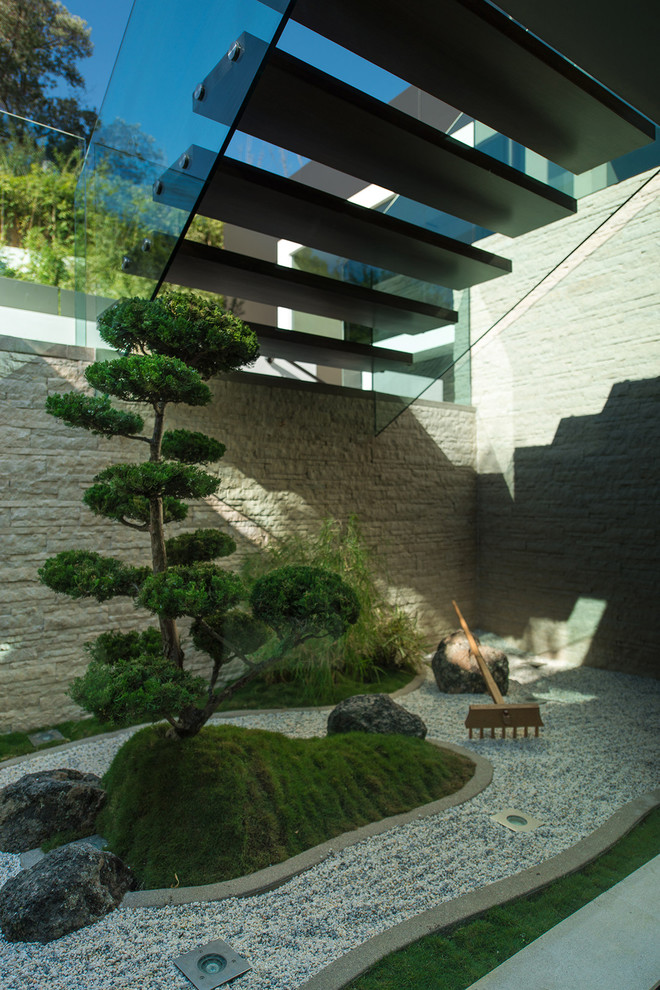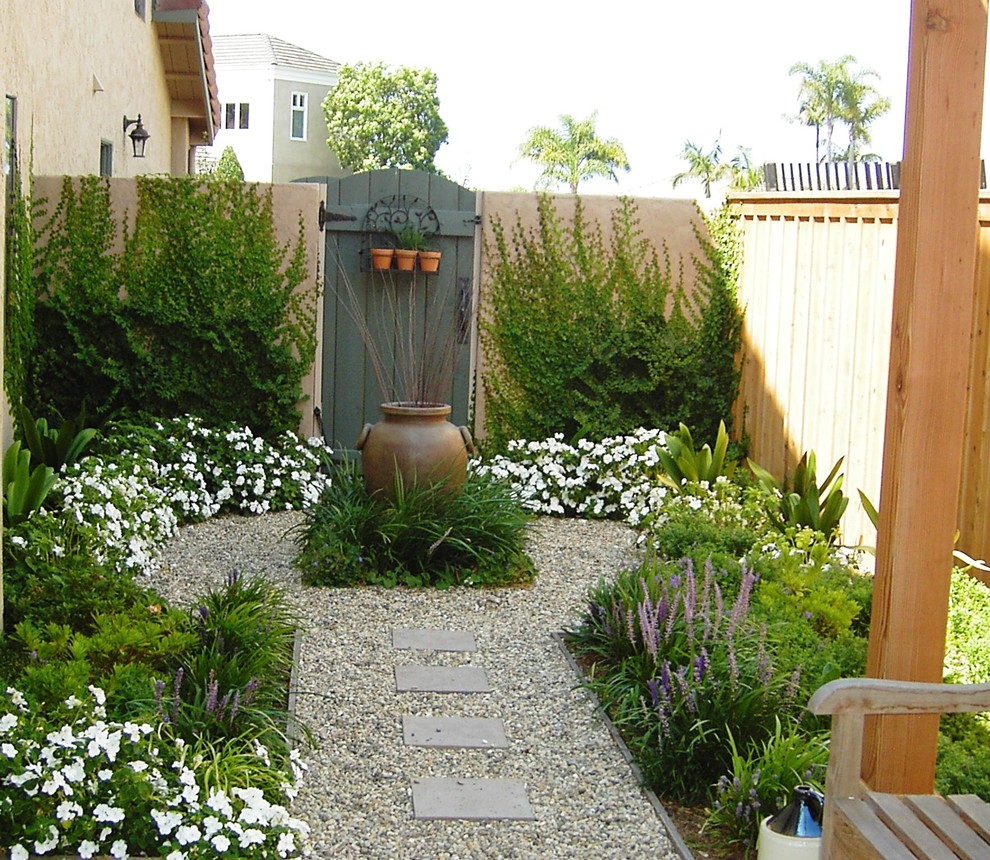Table Of Content

There are no rocks, only small stones framing the courtyard and plantings, with Andromeda ferns in the corners. Its starkness is its beauty, softened only when camellia petals are strewed across the gravel in April. Traditionally known as the ‘Temple of Heavenly Dragon’, Tenryu-ji is a 14th-century temple in Kyoto designed by the renowned Muso Kokushi. The garden features a big pond and boulders are positioned carefully along the boundary. Unlike other Zen gardens outside Japan, it preserves traditional rock garden techniques like the color and arrangement of stones, the asymmetry, and the general geometry of the garden.
Zen Garden Ideas: 25 Backyard Havens for Cultivating Serenity
A Zen garden provides you with a dedicated space to relax and unwind. The act of tending to your garden, raking the gravel or sand, and rearranging the rocks can be a meditative and therapeutic activity in itself. Consider using natural materials like bamboo, stone, or wood, and integrate simple, minimalist designs that complement the serene ambiance of your outdoor sanctuary. Create dedicated outdoor meditation spaces within your zen garden, offering visitors a tranquil respite for personal reflection and spiritual practice. Use a specialized rake to carefully sculpt mesmerizing designs in fine sand or gravel, inviting visitors to appreciate the beauty in the moment before it inevitably shifts and changes.
Types of Rakes Every Homeowner Should Know
Converting a simple-looking garden into a stunning piece of art with traditional stone lamps, gravel, and boulders. At Tofuku-ji, a temple, in the city’s southeastern district, Shigemori designed the garden of the Hojo, the Abbot’s Hall, as early as 1939, using materials found on site. His avant-garde vocabulary of straight lines and grids may have seemed sensational then, but it is beloved now for its harmonious vitality. A graduate of Cornell University, Keane has lived in Japan for almost 20 years and specializes in Japanese garden design. Our unique ability to combine many elements to our design, gives our clients, one of a kind landscapes . For every season there is a turn, our designed landscape gives a distinct flavor as the season arrives that you will find comfort for every reason.
A Garden from Scratch: How to Begin the Plant Selection Process
Carefully prune hedges and woody perennials to achieve the manicured look synonymous with Zen gardening. If you’re familiar with the art of bonsai, then you already know a bit about miniature zen gardening. Many people also practice mindfulness using arrangements of succulents and moss. In some Japanese Zen gardens, intricate patterns may be raked into the gravel, symbolizing ripples in water. The pattern is not meant to be walked on but observed from the side of the garden, says Torii. Some gardens have plantings, such as moss or creeping plants, while others do not.
Tea Houses: Sanctuaries for Contemplation

Even a small rockery in the yard or one carefully positioned boulder will force passersby to stop and admire, taking note of something you might otherwise have walked by. Before you can start building your Zen garden, you need to prepare the ground. Select a space in your outdoor area that is quiet and secluded. Ideally, it should be a spot that receives adequate sunlight and is away from distractions or noise. These miniature sandboxes not only encourage creative expression but also serve as a meditative exercise in letting go and embracing impermanence. These meandering trails encourage visitors to slow down, savor the journey, and appreciate the unfolding beauty of their surroundings with each turn.
Emergency Tree Removal: Recognizing Urgent Signs and Action
Landscaping with rocks is certainly one way to create a Japanese-inspired look in your outdoor space, drawing inspiration from zen gardens. Is a recurring question today, in the following rows we`ll briefly describe and showcase Zen Garden Designs ideas that you might find interesting. A setting that contains light sand and stones is quite common too, no water or plants. Zen gardens, more accurately known as Japanese rock gardens or sand and stone gardens, are serene retreats from the noise and chaos of everyday life. This simple, elegant type of garden has roots in the Zen Buddhist principles of simplicity and emphasis on the natural world. The concept of using design to create calm is reminiscent of Japandi design style or the wabi-sabi aesthetic.
Serenity Now: The Glory of a Zen Garden - Mansion Global
Serenity Now: The Glory of a Zen Garden.
Posted: Wed, 13 Apr 2022 07:00:00 GMT [source]
A lovely arrangement of stones, gravel, and sand, a karetaki creates the illusion of a stream of flowing water. It’s a low-fuss landscaping material that makes perfect sense in any xeriscaped space. Incorporating subtle designs into the sand or gravel of a Zen garden can yield surprisingly evocative results. Integrate areas of gravel, raked into swirl patterns around rocks or plants. These swirls symbolize the movement and flow of life, inviting reflection on the ever-changing nature of existence. Creating a Zen garden is an exercise in intentionality and balance.
Zen Garden with Yellow Trees
They will blend easily into Zen-style gardens and add a serene feel to it. Although moss can grow just about anywhere, a shady and moist place is ideal to create your mossy garden. Let moss spread happily in your space and form a dense, velvety carpet to walk on.
Zen Garden with Bald Trees
How to Bring Elements of a Japanese Garden to Your Backyard - Texas Monthly
How to Bring Elements of a Japanese Garden to Your Backyard.
Posted: Fri, 10 Dec 2021 08:00:00 GMT [source]
You can also trace a design in the sand with a bamboo skewer. This mini Zen garden is fun to keep on a desktop or give as a gift. If you don’t have an enclosed garden space, use a bamboo screen, fence panel or lattice fence around your garden, or on at least one side. If you enclose the garden completely, add a gate for easy access.
Designate an area for moon viewing, a traditional Japanese practice that connects one with the natural cycle of the moon. This layout fosters a deep connection with nature and the universe. It is recommended to carefully position a seat or bench somewhere in the yard that looks not back at the home, but gazing out to nature, so as to calm and inspire. Melissa Pino is a biologist, master gardener, and regular contributor for Planet Natural. Melissa’s work focuses on promoting environmentally-friendly practices, helping people create healthy gardens and finding ways to achieve overall health and wellness. Shrubs can be strategically placed to add a touch of greenery.
Gravel shaped into conical forms can represent mountains, in the style of a giant cone of sand at Ginkaku-ji Temple that represents Mt. Fuji (and spawned centuries of imitators). But if your space is limited, you may need to think strategically for the most compact design. Perhaps most important, you should also keep in mind the kind of experience you want to have in your Zen garden. "If you want to smile every time you see it, that's okay too," says Torii. Create entrances and transitions within your garden using plant-covered archways or bamboo, guiding the visitor on a journey through the landscape. This marks the transition from the outer world to the tranquility within, symbolizing the journey from chaos to peace.

No comments:
Post a Comment